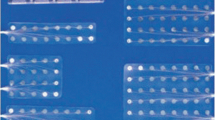Abstract
Despite improved imaging, and electrical and magnetic external mapping, there are a large number of children with intractable epilepsy in whom a focus cannot be defined by non-invasive techniques. Invasive monitoring with depth electrodes, electrode grids and/or strips is required in up to 50% of children with a suspected focal seizure disorder. In children with suspected temporal lobe epilepsy the invasive techniques are required to identify which temporal lobe is the primary focus, to separate temporal from frontal foci, and to define the extent of involvement of the lateral temporal cortex. In children and infants with non-temporal epilepsy, invasive monitoring is required to define the epileptogenic zone and to map areas of cortical specialization. The current techniques used for surgical implantation are described here. In a correctly selected population invasive monitoring will define the epileptogenic focus or foci in 90% of children; 80% will have surgically treatable epilepsy. Infection rates are less than 1% for subdural strips and 6% for grids. In 88 cases no incidence of meningitis occurred.
Similar content being viewed by others
Author information
Authors and Affiliations
Additional information
Received: 15 September 1999
Rights and permissions
About this article
Cite this article
Bruce, D., Bizzi, J. Surgical technique for the insertion of grids and strips for invasive monitoring in children with intractable epilepsy. Child's Nerv Syst 16, 724–730 (2000). https://doi.org/10.1007/s003810000336
Issue Date:
DOI: https://doi.org/10.1007/s003810000336




